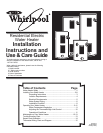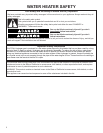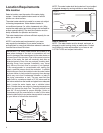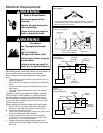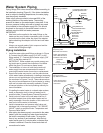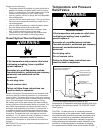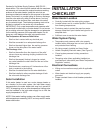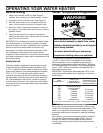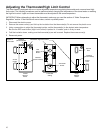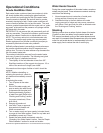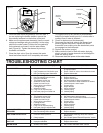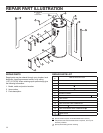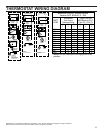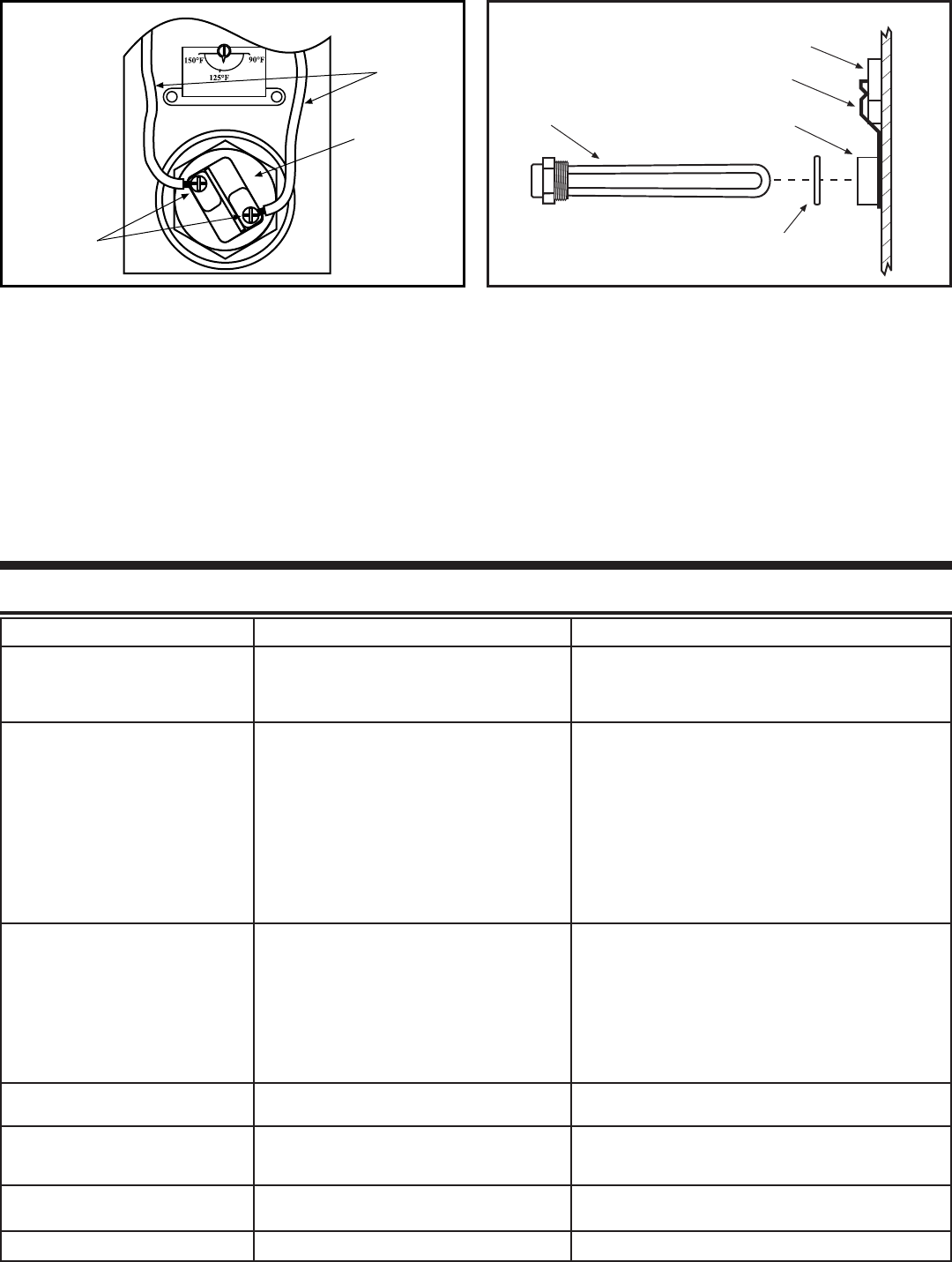
13
5. Clean the area where the gasket(s) fits to the tank. If
you are replacing the bottom element, remove the
accumulated sediment on the bottom of the tank.
6. Make sure the replacement element(s) has the correct
voltage and wattage rating by matching it to the rating
plate on the water heater. Position the new gasket(s)
on the element and insert it into the water heater
tank (Figure 14). Tighten the element by turning it
clockwise until secure.
7. Close the drain valve. Open the nearest hot water
faucet and allow the tank to fill completely with water.
Figure 14
Spud
Screw-in
Element
Gasket
Thermostat
Holding
Bracket
To purge the lines of any excess air and sediment,
keep the hot water faucet open for 3 minutes after a
constant flow of water is obtained.
8. Check for leaks around the element(s).
9. Reconnect the electrical wires to the element and
securely tighten the screws. Replace the plastic
thermostat cover making sure the attachment points
are engaged on the thermostat.
10. Replace the access cover(s).
11. Make certain the tank is filled with water. Applying
electric current to heater elements not submerged in
water will destroy them.
12. Reconnect electrical power to the water heater.
TROUBLESHOOTING CHART
PROBLEM POSSIBLE CAUSE(S) CORRECTIVE ACTION
NO HOT WATER 1. No power to heater
2. High Temperature Limit Switch open
3. Non-Functioning upper thermostat
1. Turn on electrical switch. Check for blown fuses
or tripped breaker
2. Reset. Check for source of trouble and correct
3. Replace thermostat
INSUFFICIENT HOT WATER 1. Non-Functioning thermostats
2.
Non-Functioning lower element
3. Improper calibration
4. Thermostats set too low
5. Sediment or lime in tank
6. Heater too small for job
7. Wrong piping connections
8. Leaking faucets
9. Wasted hot water
10. Long runs of exposed pipe
11. Hot water piping on outside wall
1. Replace thermostats
2. Replace element
3. Replace thermostats
4. Set thermostats to desired temperature
5. Drain. Determine if water treatment is needed
6. Install adequate water heater
7. Correct piping
8. Repair faucets
9. Advise customer
10. Insulate piping
11. Insulate piping
HIGH OPERATION COSTS 1. Improper Calibration
2. Thermostats set too high
3. Sediment or lime in tank
4. Heater too small for job
5. Wrong piping connections
6. Leaking faucets
7. Wasted hot water
8. Long runs of exposed piping
9. Hot water piping in exposed wall
1. Replace thermostats
2. Set thermostat to desired setting
3. Drain. Flush-Provide water treatment if needed
4. Install adequate heater
5. Correct piping
6. Repair faucets
7. Advise customer
8. Insulate piping
9. Insulate piping
SLOW HOT WATER
RECOVERY
1. Non-Functioning upper element
2. Non-Functioning lower element
1. Replace element
2. Replace element
DRIP FROM RELIEF VALVE 1. Excessive water pressure
2. Closed system
1. Use Pressure Reducing Valve and Pressure
Relief Valve
2. See “Closed System/Thermal Expansion” section
THERMOSTAT DOES NOT
SHUT OFF
1. Non-Functioning thermostats
2. Improper calibration
1. Replace thermostats
2. Replace thermostats
WATER ODOR 1. Sulfides in the water 1. See “Anode Rod/Water Odor” section
Figure 13
Screws
Wires
Element



